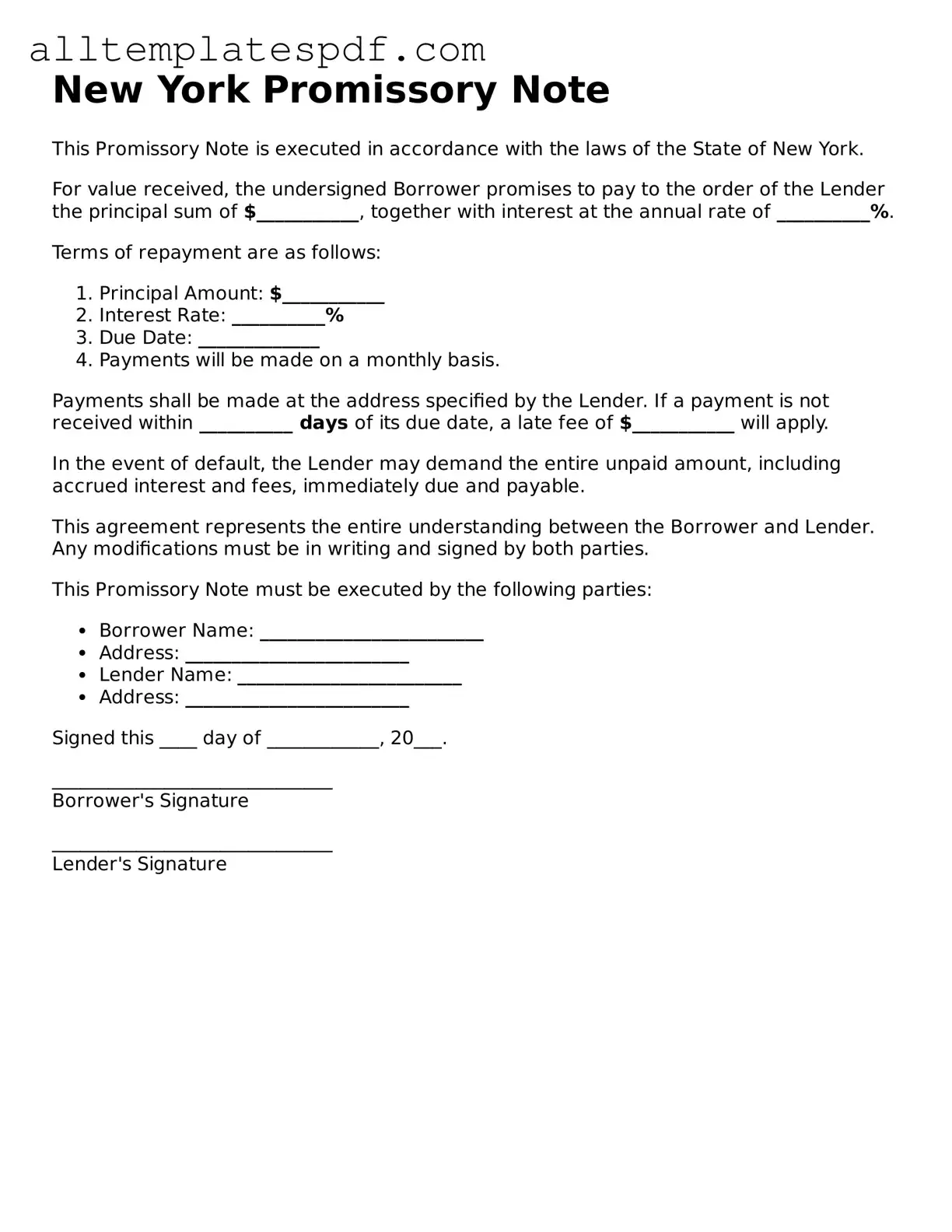Filling out a New York Promissory Note form can be straightforward, but many individuals make common mistakes that can lead to complications. One frequent error is neglecting to include the date. The date signifies when the agreement takes effect and is crucial for establishing timelines related to repayment.
Another common mistake is failing to clearly state the amount being borrowed. Ambiguities in the loan amount can lead to disputes later on. It is essential to write the amount both in numbers and in words to eliminate any confusion.
People often overlook the importance of specifying the interest rate. Without this detail, the note may be considered unenforceable. If an interest rate is applicable, it should be clearly articulated to avoid misunderstandings.
Some individuals mistakenly forget to include the repayment terms. This section should outline how and when payments will be made. Without clear repayment terms, the borrower may struggle to understand their obligations.
Another mistake is not identifying the parties involved correctly. It is vital to include the full legal names of both the lender and the borrower. Inaccurate names can complicate enforcement of the note.
Additionally, many people neglect to sign the document. A signature is a critical component that indicates agreement to the terms laid out in the note. Without it, the document may lack legal validity.
Another oversight involves not providing a witness or notarization when required. While not always necessary, having a witness or notarization can strengthen the enforceability of the note.
Some individuals fail to keep copies of the signed note. Retaining a copy is important for both parties to refer back to the agreement and ensure compliance with its terms.
Lastly, people sometimes do not seek legal advice when drafting the note. While it may seem simple, consulting with a legal expert can help ensure that the document meets all legal requirements and adequately protects both parties' interests.
